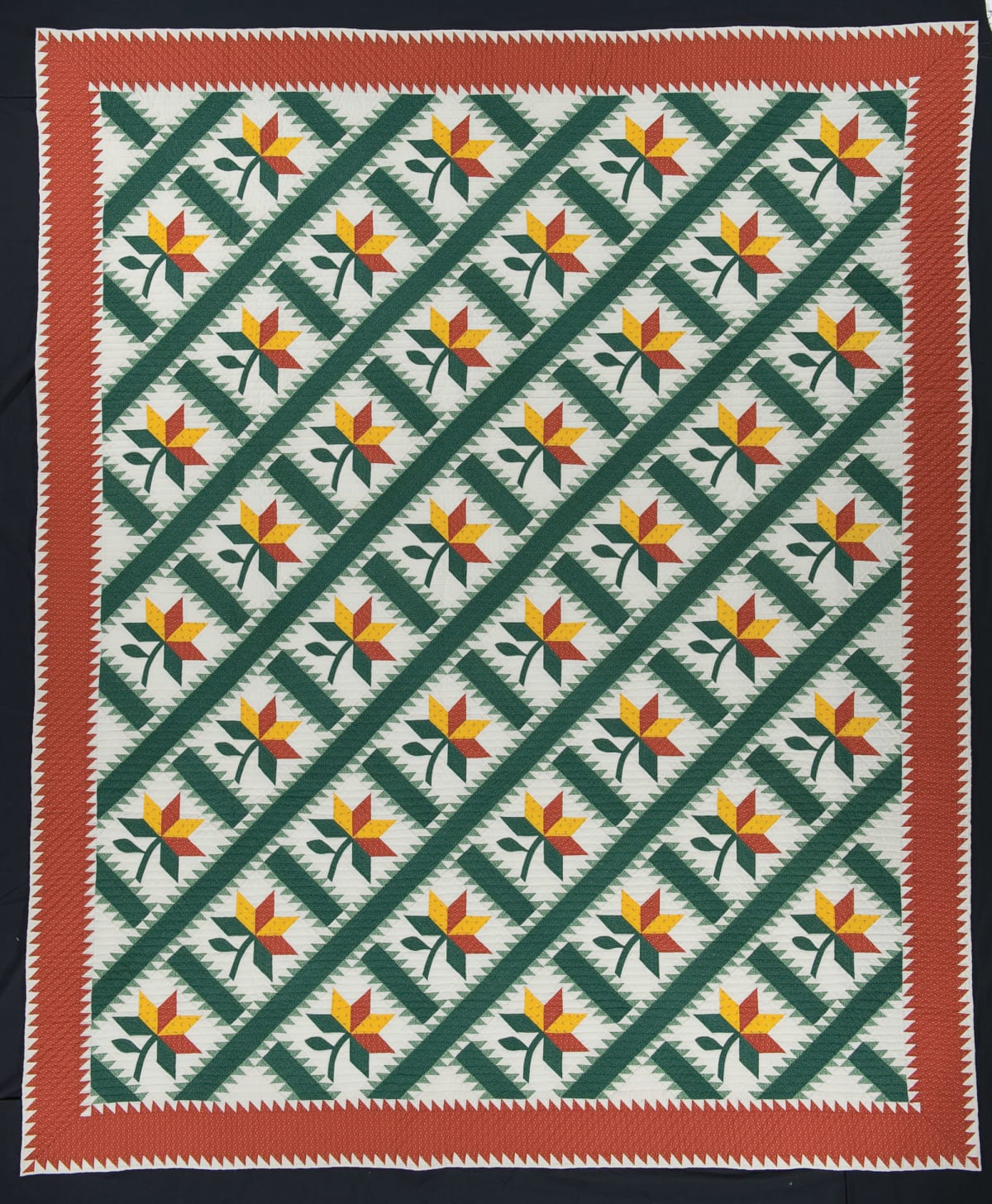
Raising the Profile
April 2 - Aug 7, 2021
Abstract Design in American Quilts at 50

Since the early 1800s, the most common place to see quilts displayed—other than on beds—was in women’s exhibits at state and county agricultural fairs. For more than two centuries, quilts have remained objects intimately connected with women’s lives. By the 1970s, however, art museums opened exhibitions that recognized quilts as objects of art for their audiences.
In 1971, one such exhibition, Abstract Design in American Quilts, opened at the Whitney Museum of American Art in New York City. This exhibition, along with other significant cultural factors, raised quilts’ profile in multiple ways. First, the art world’s new esteem of quilts bolstered a revival of American quiltmaking by new and long-time quiltmakers. In addition, quilts’ display in major art museums kindled a serious interest in quilts as collectible artworks, which in turn created a market framework to serve collectors. Lastly, the disappearance of American quilts from their ancestral homes in a journey to antique shops and collectors’ walls fueled unprecedented grassroots-to-academic documentation and study of American quilts.
The quilts in Raising the Profile introduce us to the deeply personal and particular details of these phenomena.
April 2 - August 7, 2021
Coryell Gallery